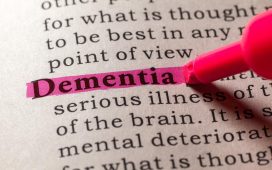Reduction in relative amplitude tied to higher risk of lifetime major depressive disorder, bipolar disorder
WEDNESDAY, May 16, 2018 (HealthDay News) — Circadian disruption and lower relative amplitude are both associated with higher risk of susceptibility to mental health issues, according to a study published online May 15 in The Lancet Psychiatry.
Laura M. Lyall, Ph.D., from the University of Glasgow in the United Kingdom, and colleagues used data from a subset of participants from the U.K. Biobank general population cohort whose activity levels were recorded by a wrist-worn accelerometer. A circadian relative amplitude variable was derived from these data, and the correlation with mood disorder, well-being, and cognitive variables was assessed.
Data were included for 91,105 participants. With the data, circadian relative amplitude, which is a measure of the extent to which circadian rhythmicity of rest-activity cycles is disrupted, was evaluated. The researchers found that a one-quintile reduction in relative amplitude correlated with increased risk of lifetime major depressive disorder and lifetime bipolar disorder (odds ratios, 1.06 and 1.11, respectively), as well as with greater mood instability (odds ratio, 1.02), higher neuroticism scores (incident rate ratio, 1.01), more subjective loneliness (odds ratio, 1.09), lower happiness (odds ratio, 0.91), lower health satisfaction (odds ratio, 0.90), and slower reaction times (linear regression coefficient, 1.75). These correlations were independent of confounding variables related to demographics, lifestyle, education, and overall activity.
“Circadian disruption is reliably associated with various adverse mental health and well-being outcomes, including major depressive disorder and bipolar disorder,” the authors write. “Lower relative amplitude might be linked to increased susceptibility to mood disorders.”
Full Text (subscription or payment may be required)
Editorial (subscription or payment may be required)
Copyright © 2018 HealthDay. All rights reserved.








